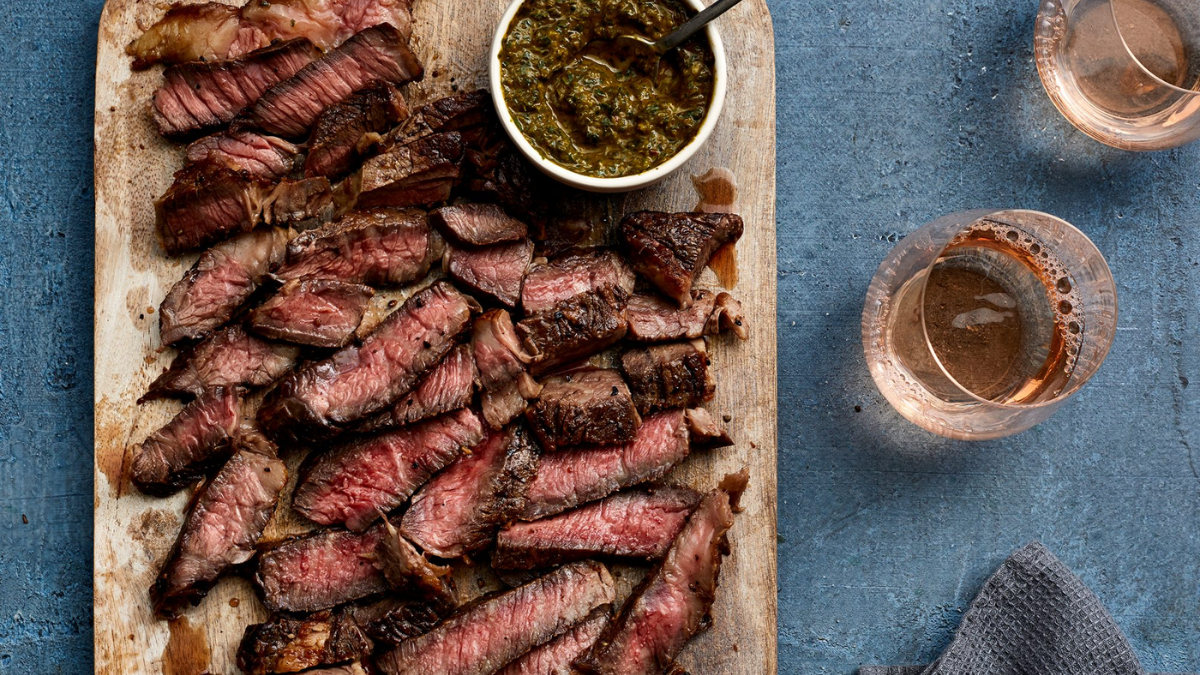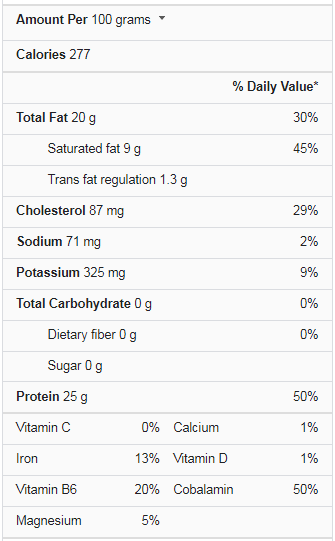Despite producing some of the greatest steaks, beef rib and loin portions are among the priciest meat cuts. One chuck steaks is a nice option if you want a less expensive substitute. Some chuck steaks are excellent for grilling, although most chuck cuts are tough and typically employed in stews, braised recipes, slow cooking, and pot roasts. The best way to cook chuck steak will depend on which of the various cuts you choose, as each one has differing degrees of tenderness.
Chuck steak has a great flavor, but it can become difficult to chew if it’s not cooked properly. One of the cheaper cuts of beef is this one. Because it contains so much fat and gristle, many people won’t buy it, even though this is what gives the meat its distinctive flavor. The beef cut is taken from the shoulder and neck region. I’ve discovered the perfect method to make the steak so soft and delicious that everyone will laud you as the best cook in the neighborhood. The secret seems to be baking while steaming.
Chuck Steak Nutrition Facts
What is Exactly Chuck Steak?
Chuck steak is a beef cut from the chuck primal, a sizable chunk of meat from the cow’s shoulder. The muscles in this area of the animal are fairly tough since it receives a lot of exercises. The top blade, which becomes quite delicate when the gristle is removed, is nevertheless one of the more fragile sections. The grain of chuck meat can alter numerous times in a single cut due to several overlapping muscles. You can choose and carve these cuts to make the most of them by keeping this in mind. The different cuts of chuck steak are defined by where in the chuck primal they come from and by how much cartilage runs through the meat, affecting how soft the steak is.
Taste
This meat is tasty, rough, and chewy because of its fat and gristle. Some people believe a good marinade is necessary to increase the flavor and softness of chuck steak.
Are Chuck Steaks Healthy?
Chuck steak is sometimes referred to as the “poor man’s ribeye,” but this beef cut has several benefits. Chuck steaks give enough backbone to make them one of the most delicate slices of meat you will ever eat on the bovine if appropriate preparation is permitted.
- Depending on how it is prepared, chuck steak can be of varying quality, and it’s frequently one of the most economical cuts because of its economic benefit. Due to its high quantity of saturated fat and gristle, many people will overlook it, but this ingredient is what gives the food its texture.
- Lean meat cut from cow shoulder is called chuck rolls or beef chuck roast. This shoulder roast can be served with flat-iron or ground beef.
- In addition to the major constituents of selenium, vitamin B12, and zinc, other nutrients include iron, riboflavin, phosphorus, and choline.
- A good source of protein may be found in chuck steaks. Your body can repair damaged tissue thanks to protein, and your body won’t be harmed if you consume 126 percent of your DRI for protein in a single meal.
- Always select beef cuts that have at least 93% lean tissue. You can choose beef dishes like a top round roast, mignon, filet uilotto, flank steak, and tenderloin. The healthiest option when selecting meats is the “select” cut.
What are the Varieties of Chuck Steaks?
How they are sliced and where they are on the animal determine the many sorts of chuck steak.
- Chuck Eye Steak: This steak is cut from the area next to the rib eye steak. This is a perfect steak for grilling and can go from the package to the grill with just a little salt and pepper.
- Shoulder Top Blade: Also known as the flat iron steak, this is also a perfect steak for the grill. A tender steak, its characteristic marbling gives it plenty of flavors.
- Shoulder Center: This tender steak (also known as ranch steak) generally has less fat than other chuck steaks, so that the flavor might be a little light. Try brushing this steak with olive oil, sprinkling with salt and pepper, and adding some basic herbs like oregano to enhance the flavor. This is a thinner steak so watch it closely to prevent overcooking.
- Shoulder Petite Tender: Also known as mock tender steak, this cut comes from the point of the chuck primal next to the top blade. While generally a flavorful little steak, this meat needs a good marinade if you intend to grill it.
- Chuck Steak: Although cut from the area next to the chuck eye steak, this piece lacks the same tenderness of the chuck eye. Therefore this steak needs to be marinated before you cook it. While still a flavorful cut of meat, this isn’t one of the best steaks for the grill.
- Shoulder Steak: Like the chuck steak, this is a tougher cut of meat and should be marinated before grilling. This steak is better when you plan to cut up the meat for dishes like fajitas.
What is the Difference Between Chuck Roast and Chuck Steak?
The cut is the only distinction between chuck roast and chuck steak. The muscle between a beef cow’s neck and shoulder blade is where chuck, an affordable cut of beef, is derived. For this reason, the chuck roast is often referred to as blade pot roast. The most widely consumed cuts of the chuck are roasts and steaks. In a roast, the meat frequently has a portion of the blade bone carved into a cylindrical or elliptical form with the grain running parallel to the meat’s long side.
How is a chuck roast cut? Simple. That identical chunk of meat is a chuck steak, chopped into 1- to 2-inch thick slices. Use a longer chef’s knife to ensure each slice has an even edge, and divide the food into equal parts.
Consequently, you can turn a couple of chuck roasts into chuck steaks. Purchase a chuck roast, cut it into steaks, and freeze it to save money. Due to the toughness of both beef slices, we advise braising or stewing them slowly. When you cook chuck roasts with liquid, they turn out well. Use a chuck steak and make a skillet pot roast out of it. You can brown it on both sides for five minutes each, then season it with herbs and spices, place a tight lid on top, and bake it for a few hours at a low temperature. Add some root veggies last, and simmer them until they are soft.
The slow cooker is great for this meat, especially the chuck roast. Try our Crock-Pot chuck roast recipes and other chuck roast and chuck steak cooking methods.
Slow Cooker Beef Stew
This cold-weather stew requires a 3-pound boneless chuck roast to begin rolling. The recipe cooks in the Crock-Pot for around 5 hours and is enhanced with additional color and vegetable nutrients from a carrot, celery, mushrooms, peas, and parsley.
Slow Cooker BBQ Beef Sandwiches
No of the weather, pick up a 3- or 4-pound chuck roast to create some fantastic barbeque. No worries if it’s raining or cold. There isn’t a long list of items to buy because you probably already have many spices and flavorings in your home.
Garlicky Pot Roast
Roast some garlic, and then use it as part of the brown sugar marinade on the chuck roast. The sauce is next; oh! Guinness and gingersnaps, yes, gingersnaps, are included in the sauce. I’ll bet you’ve never created a sauce like this.
Red Wine-Braised Beef with Apple Gremolata
A complex taste profile transforms the recipe from comfort food to a little more Haute by combining tart Granny Smith apples softened with lemon and parsley with fork-tender chuck roast steeped in red wine, onions, garlic, celery, carrots, rosemary, bay leaves, and thyme.
Beef Bourguignon
With the addition of brandy, cognac, and red wine, as well as various herbs, pearl onions, and button mushrooms, French comfort food is a typical example of booze consumption. Serve it with buttered egg noodles or mashed potatoes.
How to Cook Chuck Steak?
Here is the best recipe for chuck steak:
Ingredients
- One can (14-1/2 ounces) of Italian stewed tomatoes, undrained
- 1/2 cup beef broth
- 1/2 cup ketchup
- Three tablespoons of brown sugar
- Three tablespoons of brown sugar
- Four teaspoons of prepared mustard
- Three garlic cloves, minced
- One tablespoon of soy sauce
- Two teaspoons pepper
- 1/4 teaspoon crushed red pepper flakes
- One large onion, halved and sliced
- One medium green pepper, halved and sliced
- One celery rib, chopped
- One boneless beef chuck roast (2 to 3 pounds)
- Three tablespoons cornstarch
- 1/4 cup cold water
Instructions
- Mix the first10 ingredients. Place onion, green pepper and celery in a 5-qt. Slow cooker; place roast over the top. Pour tomato mixture over roast. Cook, covered, on low until meat is tender, 5-6 hours.
- Remove roast. Strain cooking juices, reserving vegetables. Transfer juices to a small saucepan; skim fat. Mix cornstarch and water until smooth; stir into cooking juices. Bring to a boil; cook and stir until thickened, 1-2 minutes. Serve roast and vegetables with gravy.
Where to Buy Chuck Steak?
Great chuck steaks can be purchased in your local supermarket or warehouse club. Still, it is always advisable to speak with a butcher if you have any concerns about the meat you purchase, especially because many chuck steaks have multiple names. Just keep in mind that the quality of the cut has a big role in determining the price of a steak (per pound); the better the steak, the more you pay.
Storage
However, if you buy steak off the shelf at the grocery store, it normally comes with an overwrap of oxygen-permeable film, known as “modified atmosphere packaging.” Butchers typically wrap meats on brown or white paper and pumping carbon dioxide into the package slows microbial growth and preserve the meat’s red hue. It is recommended to keep your meat in its packaging until you are ready to prepare it, regardless of how it is wrapped or packaged. Beef lasts three to five days with appropriate refrigeration (40 degrees Fahrenheit or lower). You can store fresh cuts in your freezer if it’s set to 0 degrees Fahrenheit or lower; make sure you prepare and consume them within a year.
Conclusion
Chuck steak is a sub-prime cut of beef that is a component of the chuck. Large amounts of connective tissue, particularly collagen, can melt while cooking since they are present in the chuck. Once the chuck has been separated, it is typically used for stewing, braising, slow cooking, or pot roasting and is perfect for a one-pot cooker. Since the top blade of the chuck is the second-most tender steak after the gristle is removed, it is ideal for grilling. The prime rib roast, typically made from bones 6–12, can be substituted with the fifth rib removed from the chuck.



